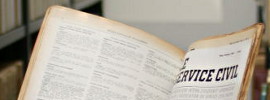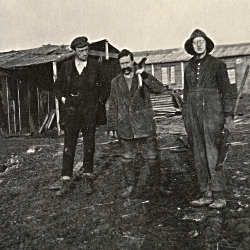Service Civil International
Iran 1963: A review on a reconstruction project
by David Palmer (Dec 17, 2012)
The SCI veteran David Palmer has recently been contacted by an Iranian student requesting information about about the reconstruction project, which took place almost 50 years ago in Dousadj.
David writes about his volunteer experience in Iran in 1963 and some of the conclusions she has arrived at in her study.
If you are familiar with the SCI International Archives website, and its 'volunteer' section, you may know that in 1963 I was one of the SCI volunteers who was recruited for a project in Iran, organized by the European Working Group (EWG). Along with about 300 other villages in the central region of Markazi, Dousadj had suffered severe earthquake damage. Iranian and International aid organizations adopted villages for reconstruction.
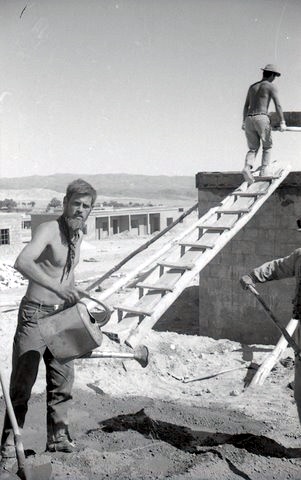
Dousadj 1963 (Iran) -
Work on the roof
Through conducting surveys and consulting the villagers of Dousadj the EWG decided on a global approach: the building of 118 earthquake-proof houses, plus a school etc, and providing agricultural and general development assistance. Our total workforce was substantial, with some thirty foreign volunteers plus an average of 10 Teheran student volunteers , around 30 villagers a day, and a variable number of specialist workers employed by an Iranian contractor who also provided all the necessary materials and logistics. This actual reconstruction phase took six months, from May to mid-November. Subsequent phases were to be mainly concerned with agricultural development, with strong FAO input (FAO =Â Food and Agricultural Organization of the United Nations), being carried out by small teams of 'specialist' volunteers over a period of approximately ten years. The project was the most well-planned that I have ever worked on, and along with one other, large-scale project, was of particular importance in my workcamp experience.
In May of this year (2012), I was very pleasantly surprised to be contacted by a young Iranian student studying post-disaster reconstruction projects, who had found references to the EWG Dousadj project in Iranian reports. The University department she is studying in is specifically devoted to research into 'Post-disaster reconstruction '. She had clearly googled 'Dousadj' and found my writing about it on the International Archives website. She requested any information we (myself & SCI) could offer. Heinz Gabathuler of the SCI Archives was able to send her a copy of a 90 page digital data package on the project that Philipp Rodriguez had kindly prepared for me, a few years ago, when I had been looking back into the project. She was particularly impressed by the fact that the project had not been - like so many others - simply limited to a "building" solution. In fact, before the actual building started, Teherani sociology students, supervised by a sociologist, carried out a survey by interviewing every household in the village. The results clearly indicated that the economic effects of the quake had gone far beyond loss of life, and the village economy would clearly drastically decline within a year or two, if new houses were to be the only form of assistance. Iran is one of the most earthquake-prone countries in the Near East, the average number of earth-tremors in the area is in the hundreds per year, and the nation is regularly faced with the challenge of new quakes, the need to reconstruct, and help rehousing people.
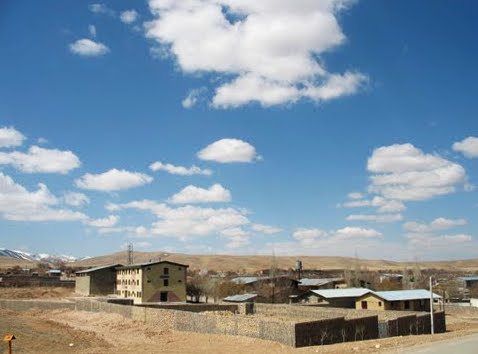
The Dousadj village cooperative (2012)
What particularly struck the young Iranian student about the Dousadj project was that it involved what she calls a "developmental approach", particularly with regards to long-term agricultural development. This she had discovered from data in Iranian academic reports on the project. Hence it became the subject of her thesis. Most of our correspondence has covered questions about the building techniques used, and the how the plans for the houses were arrived at by frequent consultation with the villagers in order that the houses be built so as to fit their lifestyle requirements as well as possible.
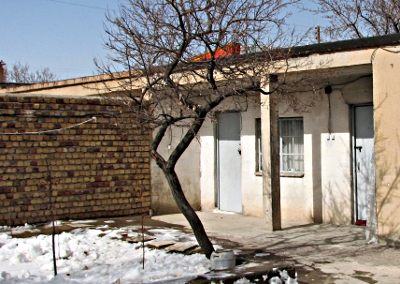
Dousadj 2012. An individual house
Earlier this year she visited the village two or three times and took a number of photos and interviewed some of the villagers. She transferred several photos, and It came as quite a shock for me to see the place as it is today; some houses are the same as we left them, but many others have been added to and modified. I wasted no time in sharing these photos with seven friends around the world, all ex-Dousdaj volunteers. She feels that there are still far too many reconstruction projects undertaken by the authorities which are, all too often limited to just building what are potentially inappropriate housing. She feels that there is a lot that can be learned from the EWG Dousadj project of 1963.
The student received the highest possible mark for her thesis at the end of September, and it has been a very heartwarming experience for us ex-volunteers to realize that present-day Iranians could be interested in the work we took part in nearly fifty years ago ...

